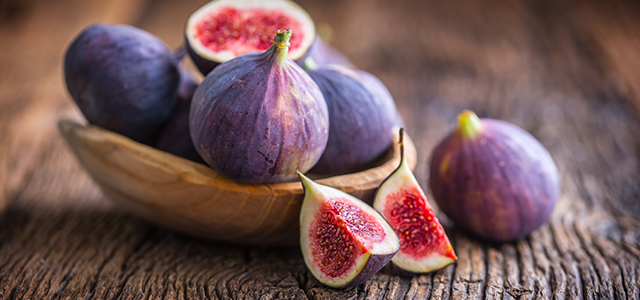5 facts about figs

Have you noticed? The fig has been moving centre stage again in recent times. This is because this sweet fruit not only has a fabulous taste, it is also an excellent alternative to white sugar in many recipes. But what is behind the “fruit of the gods”? Take note – here come our 5 facts about figs!
Fact 1: Figs have an action-packed history
Yes, the common fig (ficus carica) is actually one of the oldest crop plants in the world. Even in ancient times, it was cultivated as an agricultural crop in the Mediterranean. Aristotle himself was a fan of the juicy fruit, whose skin can be black, purple, green or even yellow. And the fig even gets a mention in the Bible. So if you add this sweet and delicious fruit to your muesli any time soon, you can look forward to a breakfast that is really steeped in history.
Fact 2: When dried, they taste particularly sweet
One reason for their popularity among foodies is their sweetness. Very ripe figs and dried figs taste particularly sweet. This is due to their fructose content. The darker the fruit, the sweeter it is. Dried figs change their shape and appear flat. And because water is lost when the figs are dried, the nutritional composition is also different. Dried figs contain more carbohydrates and therefore more calories than fresh figs. So they will provide you with energy quickly when eaten as a snack in between meals. Tip: When baking, you can replace white sugar by the same quantity of figs. To do this, soak the fruit in water beforehand and add chopped figs to the dough.
Fact 3: Figs are delicate
Fresh figs need to be treated with care as they are delicate. The skin bruises very easily and if this happens the fruit turns mushy. So choose ripe figs with an undamaged skin. If the fruit “gives” slightly when pressed gently, it is perfect. Store figs carefully for best results. They will only keep for a day or so at room temperature; in the refrigerator, they will keep for about two days. Dried figs are less complicated.
Fact 4: They help our bodies to work
Figs are rich in potassium: 100 g of figs contain roughly 250 mg of this mineral. Potassium is also one of the body’s electrolytes. Most of the potassium in the body is located in the cells. We need it to ensure that our cells, nerves and muscles function correctly. A lack of potassium can lead to impaired heart function and electrolyte imbalance. In addition to potassium, figs also contain several other vitamins and minerals, including vitamin A, B vitamins, magnesium and iron.
Fact 5: The skin is edible and is good for the digestive system
How convenient! You can also eat the skin of fresh figs – just make sure you wash the fruit first. Most of the vitamins are directly under the skin and the skin itself is rich in fibre. Figs therefore make a filling snack in between meals. You can eat figs whole or with a spoon. They taste deliciously fruity whatever way you decide to eat them: raw, poached or baked. Let your creativity run wild in the kitchen! How about trying our blueberry and Swiss chard salad with salmon, or our pineapple Buddha bowl?
It’s time to embrace the fig!
Your Dole Team

